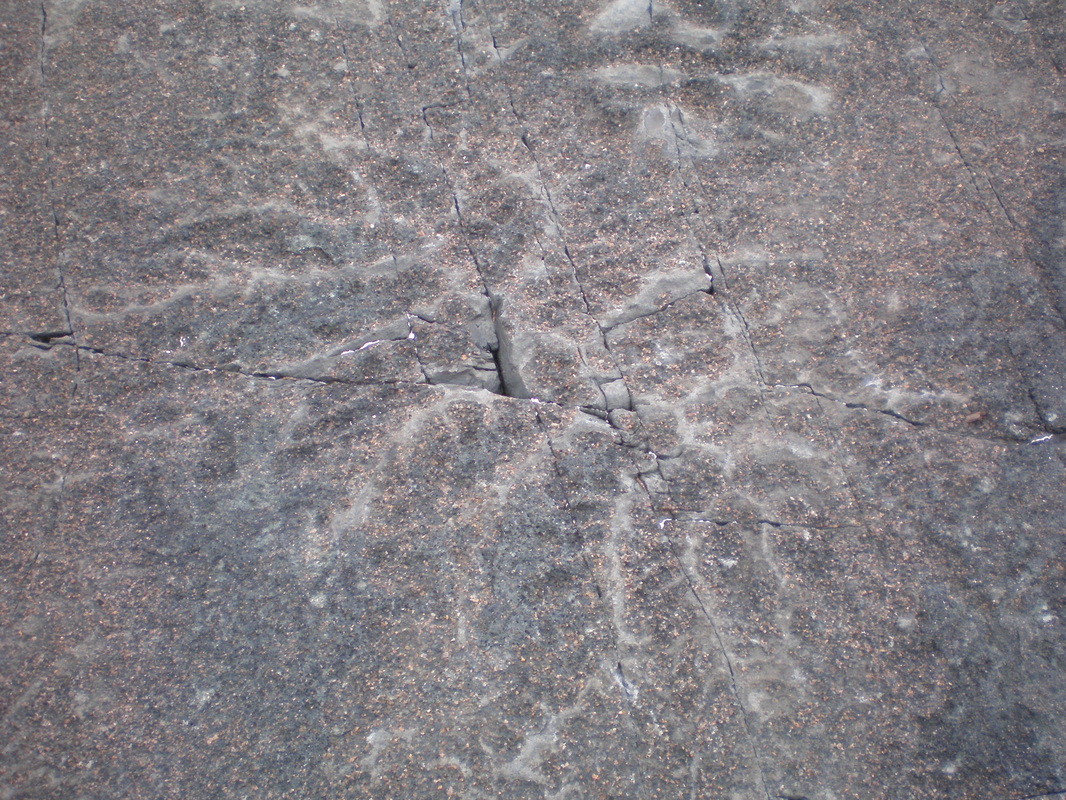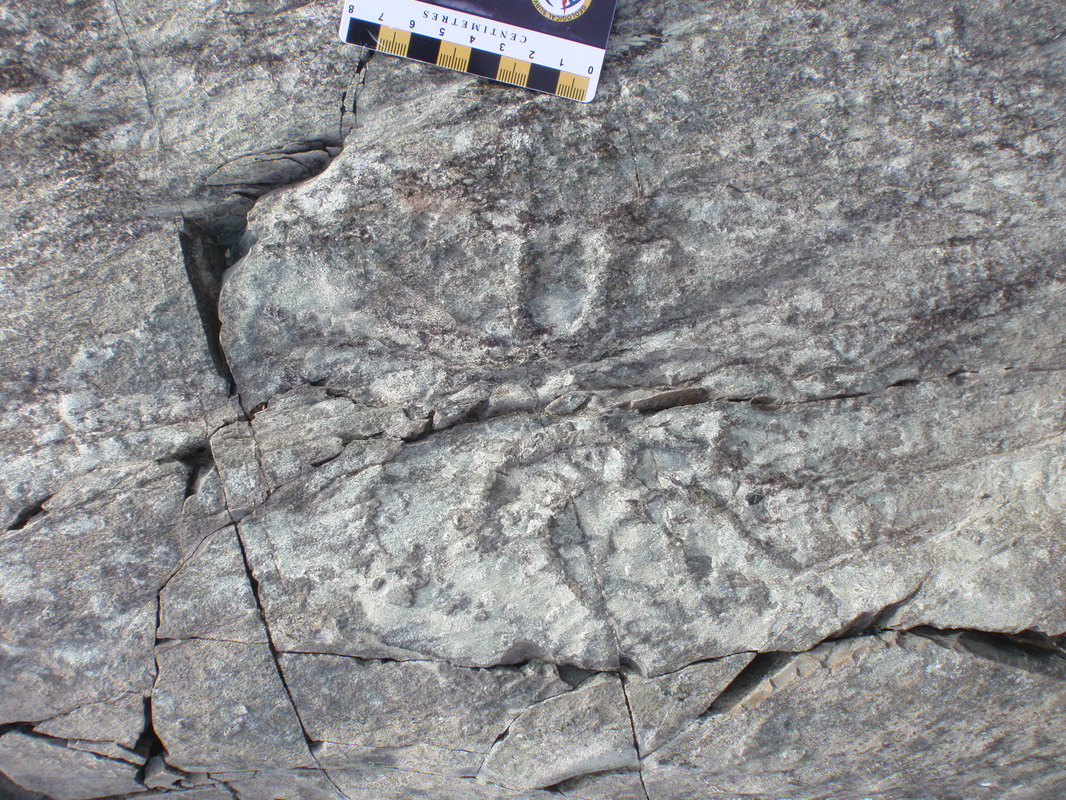hapsidophyllas flexibilis
bamforth and narbonne, 2009
Hapsidophyllas is comprised of a network of large and overlapping fronds that emerge, like Pectinifrons, from a central rod at regular intervals. Hapsidophyllas is a very rare rangeomorph, and the few known specimens are largely poorly preserved, hampering efforts to understand it. What's more, it appears very different from the only other known multi-polar frond, Bradgatia linfordensis, where all the branches emerge from one central point.
The fact that Hapsidophyllas appears to have had flexible branches is also of interest, with the only other rangeomorph appearing to show this is the equally rare, unipolar Frondophyllas grandis.
The fact that Hapsidophyllas appears to have had flexible branches is also of interest, with the only other rangeomorph appearing to show this is the equally rare, unipolar Frondophyllas grandis.
|
Diagnosis:
Decimeter-scale, multibranched fossil consisting of numerous ovate to lanceolate leaflets arranged in a radial configuration about an elongate basal rod. Leaflets with prominent, flexible central stalks bearing multiple primary branched emerging sub-perpendicularly along the length of the central stalk, alternately branching on either side. Secondary branches emerging perpendicularly to and along the length of each primary branch. Key papers: Jenkins 1992 Narbonne, Dalrymple and Gehling 2001 (Field guide) Narbonne, Dalrymple, Laflamme, Gehling and Boyce, 2005 (Field guide) Narbonne, Gehling and Vickers-Rich in Fedonkin et al. 2007 Bamforth and Narbonne 2009 Liu, Mcilroy, Antcliffe and Brasier, 2011 |
Described from:
Avalon peninsula, Newfoundland |


